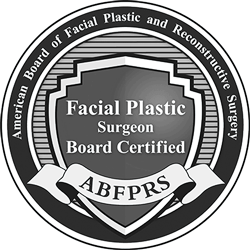Skin Screening & Cancer Removal
We offer the highest cure rates, the best cosmetic outcomes, and an organized, pleasant experience
Mohs Micrographic Surgery
Mohs micrographic surgery is the most accurate way to treat basal and squamous cell skin cancers. It provides the highest cure rates on all body sites (99% for a new basal cell carcinoma and 96% for a new squamous cell carcinoma). Under local anesthesia, the tumors roots are traced out using a very precise method that conserves normal skin. Medicare and private insurance companies only permit us to perform Mohs surgery for the following situations:
- Cancers on the scalp, face, neck, eyelids, ears, lips, nose
- Cancers that recurred after previous treatment
- Cancers beside old scars
- Cancers that are large
- Cancers with poorly defined edges
- Cancers that grow rapidly
In 2001, Dr. Michael Warner became the first Mohs surgeon in Frederick. He has performed over 15,000 surgeries and averages 30 cases per week. He works with a specialized team of compassionate staff that makes the experience a good one.
*Medicine is not an exact science and individual results may vary.
Our Benefits
We have been performing and improving the Mohs surgery process for over a decade. We offer the highest cure rates, the best cosmetic outcomes, and an organized, pleasant experience. We treat people the way we would want to be treated.
- Fellowship-trained Mohs surgeon and facial plastic surgeon
- Organized, specialized team and office
- Extensive experience repairing complex wounds on all parts of the body
- All reconstructions performed the same day
- Your providers are in town and accessible all day and all week
- Reduced in-office waiting times
Why should I choose a Fellowship Trained Mohs Surgeon?
Any physician who performs surgical excision of a tumor and reads the pathology his or herself can legally claim it as Mohs surgery. High cure rates and good cosmetic outcomes depend on proper training. To regulate the quality of training in the United States, The American College of Mohs Micrographic Surgery oversees one or two year formal training programs called fellowships. Make sure your physician is a fellowship-trained member of the “Mohs College” to ensure the highest level of expertise.
- Click here for more information about Mohs Micrographic Surgery
- Click here for more information about the specific training Dr. Warner received to become a Mohs Micrographic Surgeon
- Visit www.SkinCancer.org to learn about the prevention and treatment of skin cancer
Reconstruction
Dr. Warner and Dr. To have extensive training and experience with wound reconstruction. On average, they reconstruct 25 to 30 wounds a week. The technique for repair depends on the location, size, and shape of the wound, the type of tumor, and patient preference. Options include primary closure, secondary intention, flaps, grafts, and delayed closure.
Primary closure involves suturing the wound edges together. This usually means closing a circular wound into a single linear scar. That scar can often be placed in junctions and wrinkles to minimize visibility. We have our own techniques to minimize scar stretching and prevent “rail road track” scars.
Secondary intention involves allowing the wound to heal on its own. This can take four to six weeks on the nose or ears, but longer on the trunk and extremities. Healing by secondary intention can produce excellent cosmetic results in certain locations such as the ear and creases of the nose.
A skin graft involves removing skin from a different site and suturing it onto the wound. Skin can be borrowed from various sites on the face, ears and neck that will heal with very subtle scars. Skin grafts are especially helpful for large shallow wounds.
A flap involves making new incisions near the original wound in order to transfer adjacent tissue. A flap uses the nearby skin which provides the best color and texture match. The extra incisions can often be placed in existing creases or subtle areas. Flaps are very useful to fill deep wounds and to prevent distortion of mobile structures like the nose, eyebrows, eyelids, and lips.
Delayed closure (by 2 to 4 weeks) may be necessary to allow more blood vessels to form in the wound bed prior to a flap or a graft.
*Medicine is not an exact science and individual results may vary.
Alternatives to Surgery
Curettage
Commonly called ED&C for electrodessication and curettage, this technique involves scraping away the tumor with a sharp instrument followed by destruction with an electrical needle. The resultant wound is allowed to heal on its own, typically leaving a round, shiny and slightly discolored scar.
Surgical Excision
Surgical excision involves removing the tumor with a margin of normal skin. The tissue is mailed to a lab to ensure that the tumor is completely removed. The wound is closed with stitches leaving a linear scar, or the wound can be left to heal on its own which leaves a round shiny scar.
Cryosurgery
Liquid nitrogen is applied directly to the skin to freeze the cancerous tissue. An open wound forms at the site of treatment and heals in four to eight weeks. The resultant scar is typically smoother and lighter-colored than normal skin.
Topical Chemotherapy
Creams containing 5-fluorouracil or imiquimod can destroy small superficial tumors. The creams are applied once or twice daily for one to three months, during which time the areas often become irritated or scabbed.
Laser Surgery
Carbon dioxide laser treatment involves intense waves of light that are beamed at cancerous skin to cut away or vaporize the tissue and a margin of normal skin. The open wound is left to heal on its own, which usually leaves a shiny round scar.
*Medicine is not an exact science and individual results may vary.





